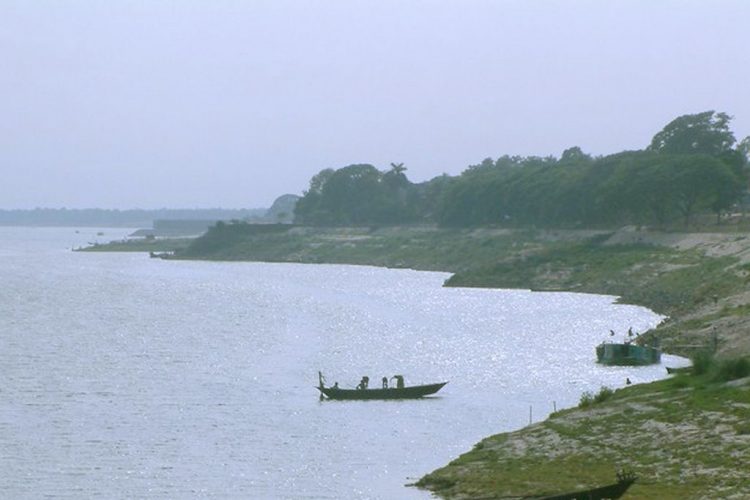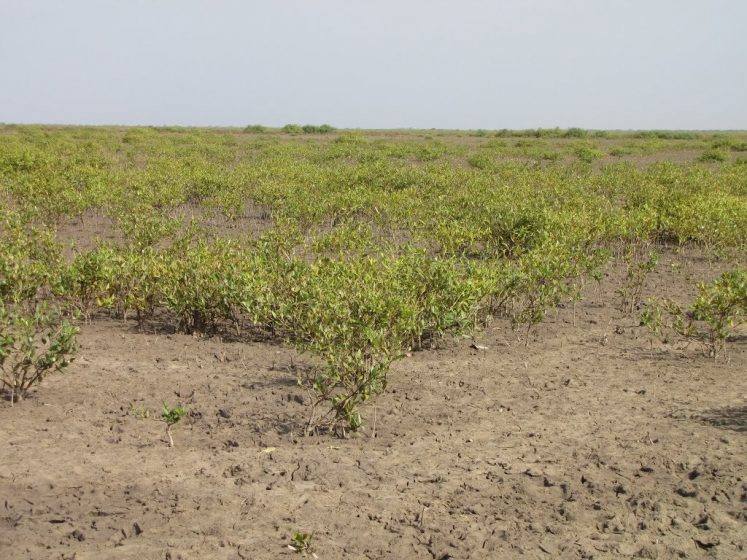Keti Bunder is part of the Indus Delta and is situated in Thatha district, Sindh, Pakistan. The diversity of avian dominance and the diversity of Keti Bunder are carried out at dawn and dusk in the winter season. Keti Bunder is situated at the mouth of the River Indus, recognized as Ochito, which enters through Hajamro Creek and consists of an area of 9,130 hectares.
The mangrove forests are key forest and ecological features of this region. These mangroves cover an area of 2,631ha with a large size of 1996 ha. However, the medium size is about 3,588 ha and is sparsely distributed. The remaining part consists of human settlements, sand dunes, and water channels.
The area is composed of a large number of channels on the western and eastern sides. On the other two sides, there are shallow and deep-water channels, namely Hajamro Creek, Khobar Creek, Dabbo Creek, and Qalandri Creek.
Keti Bunder consists of 195 villages, with an estimated population of about 27,405 and a number of households of more than 4,000. These towns are widely distributed over 35 acres of land around the seawater. In a survey, around 49 winter-season bird species belonging to 33 genera and 21 families were recorded. A total of 4280 birds were recorded in the dedicated survey effort from the Keti Bunder.
The most abundant species in this area are little egret, cattle egret, greater flamingo, greater egret, and common coot. The number of beautiful bird species is decreasing with the passage of time due to anthropogenic impacts, especially pollution impacts.
The exponential growth of the human population has badly impacted the avian species in many ways, such as habitat loss, deforestation, invasive species, agriculture intensification, urbanization, industrialization, human-avian negative interactions, and climate change.
Almost 90% of people are engaged with the fish industry. These fishermen are from different casts present in the area. The Syed and Memon communities are said to be well-reputed in terms of socioeconomic status, while the majority of them have small businesses on agricultural land. People are involved in fisheries in different ways, such as fishermen, boat owners, boat captains, helpers in factories, transporters, merchant shops, and drivers of fish carrier vehicles.
Keti Bunder is a wildlife sanctuary for the conservation of water birds. The winter visitor’s and summer breeder’s birds are herons, egrets, waders, pelicans, and raptors. Common terrestrial mammals are fishing cats (Prionailurus viverrinus), Indian wild boars (Sus scrofa), Asian jackals (Canis aureus), and Indian porcupines (Manis crassicaudatus).
The most common reptiles are sea snakes, vipers, cobras, and lizards. For the identification of avian species, the first was a wildlife sanctuary, the second was Keti Bunder Port, and the remaining two were rural areas of the habitats. Each place was visited for four months. Once each month and twice a day at dawn and dusk.
Only one bird watcher moves from one place to another by ship or boat to measure bird diversity. The species of birds in the winter season from Head Qadirabad, Punjab. The freshwater areas of Pakistan have a high species number as compared to coastal areas of Pakistan. The freshwater landscapes have higher and unique nesting, roosting, feeding, shelter, and breeding sites as compared with coastal areas.
However, the other reason is that industrial wastes, pesticides, and household wastes are dumped in all polluted rivers, and water enters coastal water from all over Pakistan. anthropogenic impacts like deforestation, land degradation, agriculture use, shipping, a high rate of fishing, urbanization, fertilizer and pesticide use, and ethno-avian use are the main causes of species depletion.
The species number is getting low while the population of the bird is higher as compared with freshwater birds. The reason is that homogeneity in the landscape in the coastal area, e.g., only mangrove plantations, is present, while freshwater landscapes have heterogeneity in landscapes, i.e., grasses, herbs, shrubs, and tree plantations.
It is concluded that the number of bird species is decreasing with the passage of time, and it is noted that freshwater birds’ diversity is higher than coastal birds’ species. The reason is that the pollution rate is increasing day by day in coastal areas of Pakistan. But it is also noted that there is less heterogeneity in the landscape of the coastal area of Pakistan as compared with the freshwater landscape.




Read More
-
Lulusar Lake – Unspoiled Gem in High Mountains Peaks
-
Mahodand Lake – Unimaginable Natural Beauty
-
Saifullah Lake – A Gem lies in the Foothills of the Hindu Kush Mountains
Affiliates Links:
-
How One Woman Discovered the Female Fat-Loss Code Missed by Modern Medicine And Lost 84lbs Using a Simple 2-Step Ritual That 100% Guarantees Shocking Daily Weight Loss
-
60 Seconds Habit! That Reversed Type 2 Diabetes and Melted 56 lbs of Fat
-
Boost Your Energy, Immune System, Sexual Function, Strength & Athletic Performance
-
Diabetes Remedy # 1 Mega Offer for 2019